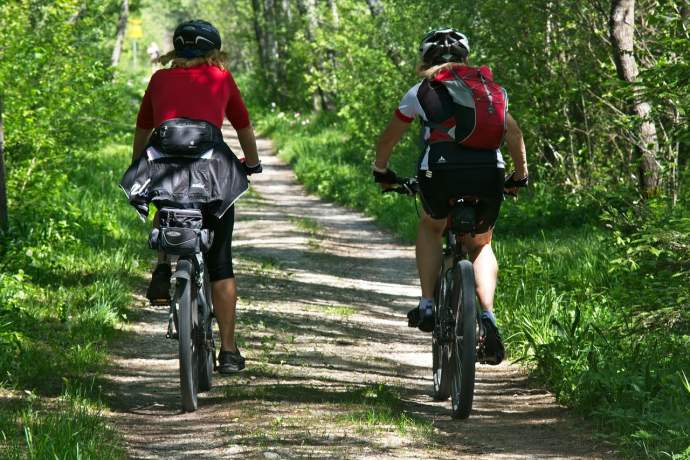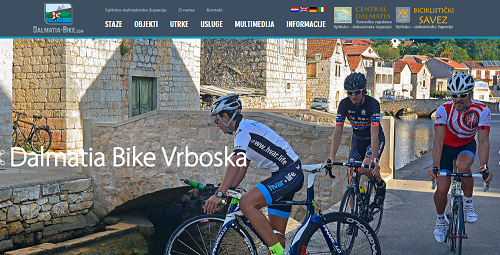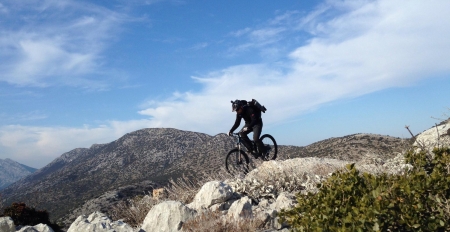Without changes to the transportation system there cannot be a more sustainable and ecologically aware society, and cyclotourism is the right path towards it, is the conclusion of the panel discussion held on Thursday in Zagreb where MEP Michael Cramer presented his vision of this type of tourism.
The panel was held as part of the European Mobility Week, hosted by the Croatian MEP Davor Škrlec.
European Mobility Week has been held for sixteen years in a row, and its events discuss various legal framework needed to achieve sustainable mobility in the next decade in Europe, especially in the context of the Paris Climate Accord, signed by the European Union.
As part of that manifestation, on Wednesday and Thursday panel discussion were held in Koprivnica and Zagreb, named “Sustainable Mobility in cities and cyclotourism,” hosted by Škrlec, the Croatian representative of the Green Party in the European Parliament, with German MEP Cramer as guest, also from the Green Party.
Although the panel discussion in the Europe House in Zagreb discussed cycling in general, the accent was on cyclotourism as an increasingly represented form of sustainable tourism, something the German representative and passionate cyclist is an expert on.
Cramer is the initiator of the cyclotourism project EuroVelo13 and author of the book “European cycling path – Iron Curtain,” in which he connected sustainable tourism with European history and culture.
As a resident of berlin, a city in which the Iron Curtain left the most obvious mark, Cramer initiated the establishment of a route which follows its entire length, with around 10.400 kilometres and passing through 20 countries, from the Norwegian-Russian border, through 13 EU member states, including Croatia along the Drava, to the Bulgarian coast of the Black Sea.
The German pointed out that cyclotourism is growing at 20 percent annually for over a decade, and noted a Swiss study which showed that tourists traveling with cars spend a third less than cyclists.
The total economic benefit from cyclotourism in 2013 in all EU member states was 513 billion euros, and according to a European Parliament study in 2012, the annual income from this type of tourism was 44 billion euros, while at the same time income from ecologically harmful and unsustainable cruisers was 39 billion euros.
“If we want to save the climate, mobility is key, as it is the only sector which has shown a growth of harmful gas emission rates since 1990,” said Cramer at the panel, concluding that traffic voids all the effort achieved in other sectors.
He pointed out he himself has not owned an automobile since 1979, and noted this is the case “with every second household in Berlin,” and disclosed he has cycled through most of Croatia, whose various landscapes, cultural and historical landmarks offer great potential for the development of cyclotourism.
He cited the Drava River route passing through middle European countries, including Croatia, which was given an award from the German Cycling Society, as an example of a potential route Croatia could use to develop this type of tourism.
MEP Davor Škrlec considers the development of cyclotourism and cycling in Croatia does not need as much financial means as it does political will.
“When urbanism plans are being made, and we know changes are taking place in local units, cycling infrastructure needs to be in mind,” said Škrlec about the importance of good spatial planning.
Referring to the words of his German colleague, Škrlec repeated the “Iron Curtain did not come down on its own, nor due to politics, but due to the will of people.”
“When citizens recognise the advantages of bicycles as transportation vehicles, then the public pressure towards politics will enable for all these projects to come true,” said the representative, adding potential also exists in Croatia in the conversion of old routes, such as the Samoborček rail line which used to connect Samobor to Zagreb.
“Cyclotourism does not have any unfavourable effects on local communities and we can develop it year-round, which lengthens the tourism season, one of the goals of the Tourism Development Strategy until 2020,” reminded Škrlec.
“Cyclotourists travel with less luggage and spend a lot more on food, unlike cruiser guests who have everything available on the ship,” he concluded.
Lidija Mišćin, President of the Coordination Body for Cyclotourism Development of Croatia, founded in March of last year, pointed out the issue of insufficient connectivity of local routes made within towns and counties, not integrated into EuroVelo routes.
EuroVelo is an initiative which coordinates the development of a high quality cycling network and whose goal is to cover the entire European continent by 2020.
The coordination body, part of the Tourism Ministry, is composed of 10 representatives of non-governmental associations, three ministries, Croatian Roads and Tourism Board, and focuses on coordinating the many cycling routes in Croatia.
“We work on the development of all services along those routes – accommodation, signs, bike-friendly accommodation and the like. We also work on educating counties in advancing their cycling services,” said Mišćin.
She reminded that out of fifteen total EuroVelo route, four of them pass through Croatia. By 2020 they will be around 70 thousand kilometres long at the European level.
“Our geo-transportation position and proximity to cyclotourism markets such as Germany, Austria and Slovenia does not mean much if we have insufficient cycling infrastructure,” warned Mišćin.
“Many of these routes pass on our roads, so it is very important that our Coordination is joined by Croatian Roads and that we work on cycling infrastructure and safety of our visitors at county level,” added the Coordination President.
She disclosed operational plans are being made to that end, fourteen of them for continental Croatia due to be completed by the end of this year, and six for the coastal areas, due to be complete by the middle of 2018.
The goal of those documents is to create a network of already existing routes, and to create a basis to demand funds from institutions to realise such projects,” said Mišćin.
The Green Party warns of the lack of many links within the EU between cycling networks, but also rail lines and other forms of public transport, which burdens daily mobility of citizens, which is why they brought forward a proposition on connecting routes, so called Missing Links.
They analysed over 250 cross-border connections within the EU, focusing mostly on regional roads beyond main corridors. They managed to include the cycling network in the Transeuropean Roads Network, which means its construction can be financed from suitable EU funds.
The European Commission adopted the idea of Missing Links last July and allocated 140 million euros to finance cross-border connections of smaller scale which currently don’t exist.
“That initiative can also benefit Croatia,” said Cramer.
Translated from H-alter.org.









